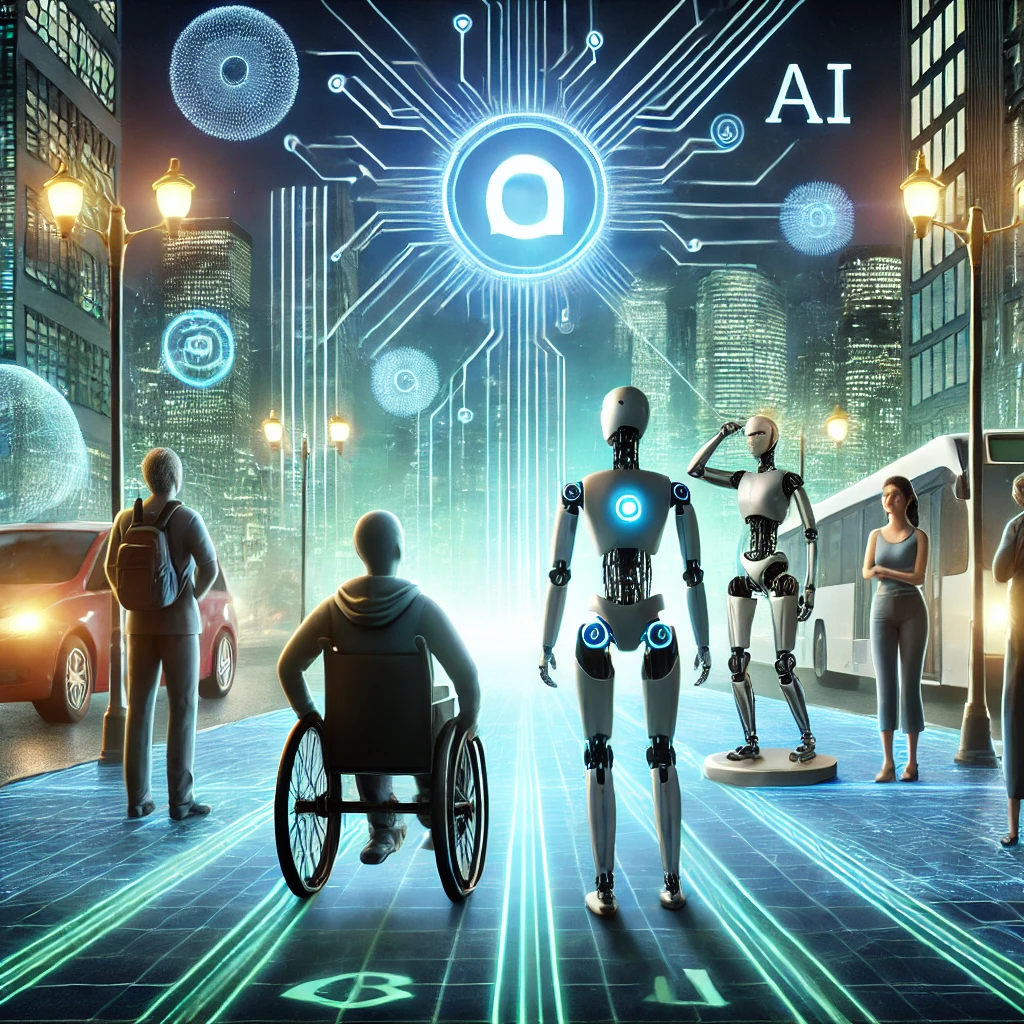As Sundar Pichai, CEO of Google, famously said, “AI is one of the most profound things we’re working on as humanity. It’s more profound than fire or electricity.” Nowhere is this more evident than in the transformative applications of AI in accessibility. Let’s explore how AI is reshaping this critical domain.
Key Developments in AI for Accessibility
AI’s integration into accessibility solutions has opened doors for millions worldwide. Below are some of the most impactful advancements:
Speech Recognition and Virtual Assistants
Speech recognition has become a game-changer for individuals, like the author of this article, with physical disabilities such as spinal muscular atrophy (SMA). Tools like Amazon Alexa, Google Assistant, and Apple’s Siri empower users to control devices, manage schedules, and even navigate their homes—all through voice commands.
For example, Google’s Project Euphonia focuses on improving speech recognition for people with atypical speech patterns. This initiative demonstrates how AI can be tailored to meet unique user needs, making technology truly inclusive.
“Our vision is to make voice interfaces work seamlessly for everyone, including people with disabilities,” says Jeff Dean, Senior Fellow at Google Research.
Visual AI for the Visually Impaired
AI-powered tools like Microsoft’s Seeing AI app provide life-changing assistance to visually impaired individuals. By leveraging computer vision, Seeing AI can narrate the world around users, identifying objects, reading text aloud, and even describing people’s emotions.
Additionally, wearable devices like OrCam MyEye combine AI and cameras to offer real-time guidance, allowing users to read books, recognize faces, and shop independently. These technologies exemplify how AI bridges gaps in everyday life.
Predictive Text and Language Models
For individuals with conditions like dyslexia or motor impairments, predictive text and language models like OpenAI’s GPT (The research technology behind this article) facilitate easier communication. From drafting emails to assisting in creative writing, these tools remove barriers to expression.
Innovations in Mobility and Adaptive Technology
AI is also transforming mobility for those with physical disabilities. Robotic exoskeletons, AI-powered prosthetics, and self-driving vehicles are leading the charge toward greater independence.
- Robotic Exoskeletons: Companies like Ekso Bionics are developing AI-integrated exoskeletons to help individuals with paralysis regain mobility.
- AI-Powered Prosthetics: Prosthetics such as the LUKE Arm use machine learning to mimic natural hand movements, offering a near-human level of precision and control.
- Self-Driving Cars: AI advancements in autonomous vehicles, led by companies like Tesla and Waymo, promise to revolutionize transportation for people with limited mobility.
Ethical and Societal Implications
While the benefits of AI in accessibility are clear, it’s equally important to address the ethical and societal considerations:
- Privacy Concerns: Many AI tools collect vast amounts of data. Ensuring that this data is securely stored and ethically used is paramount.
- Bias in AI Systems: AI models often reflect the biases present in their training data. For accessibility solutions, this could lead to exclusions or inaccuracies for underrepresented groups.
- Affordability and Accessibility: Ensuring that AI tools are affordable and accessible to all, regardless of economic status, is critical to fulfilling this mission.
As Satya Nadella, CEO of Microsoft, stated, “Our mission is to empower every person and every organization on the planet to achieve more.”
Future Outlook
Looking ahead, the role of AI in accessibility will only grow. Here are a few predictions:
- Enhanced Personalization: AI will evolve to provide hyper-personalized solutions, adapting to individual needs in real time.
- Integration with Smart Cities: Accessible AI will integrate with smart city infrastructure, enabling seamless navigation for people with disabilities.
- Neurotechnology and Brain-Computer Interfaces: Emerging technologies like Elon Musk’s Neuralink promise groundbreaking advancements in communication and mobility.
“The pace of progress in AI is incredibly fast. Unless you have direct exposure to groups like Neuralink, you have no idea how much progress is being made,” says Elon Musk, CEO of Neuralink and Tesla.
Resources to Learn More
Here are some resources for those interested in diving deeper into AI and accessibility:
- Google’s Project Euphonia – Learn about Google’s efforts to make voice recognition more inclusive.
- Microsoft Seeing AI – Explore this powerful app for the visually impaired.
- Ekso Bionics – Discover how robotic exoskeletons are transforming mobility.
Final Thoughts
AI in accessibility is not just about convenience; it’s about empowerment. These tools enable individuals to live more independent, dignified lives, breaking down barriers that once seemed insurmountable. As technology continues to advance, the possibilities for inclusivity are endless.
At Zulink, we’re excited to be part of this journey, sharing insights and fostering discussions about the future of technology. Subscribe to our newsletter to stay updated, and join the conversation by sharing your thoughts in the comments below.

